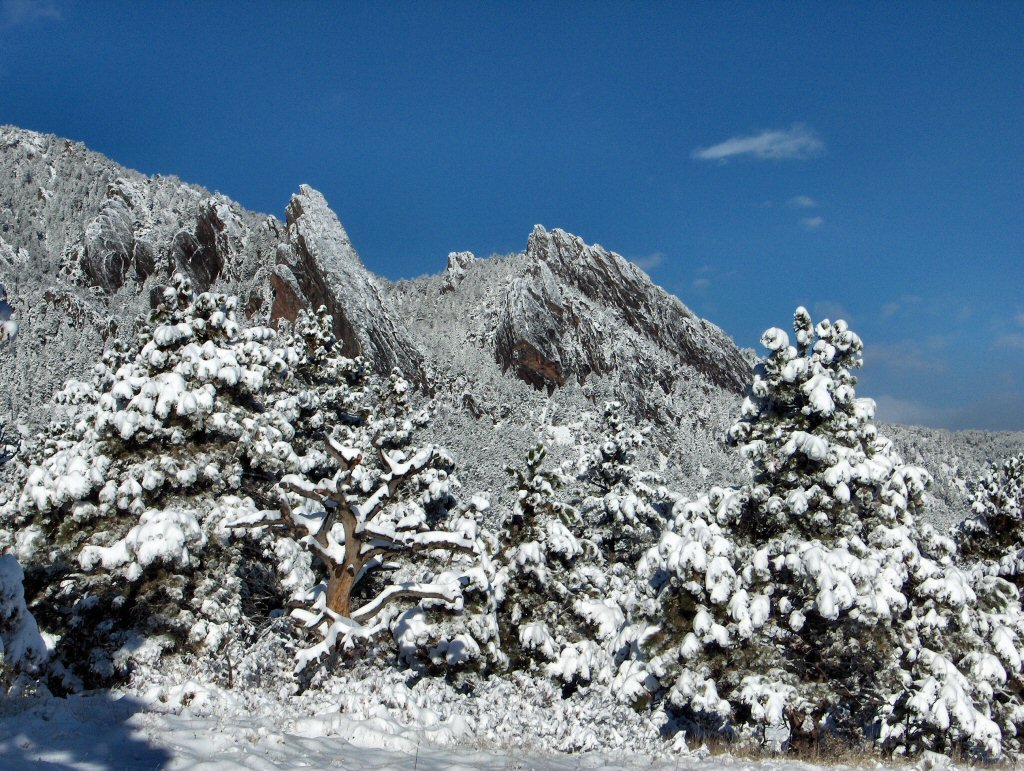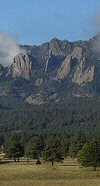An evolving quantitative approach by Suzzane Webel
DEFINITIONS AND ASSUMPTIONS
DATA from Miller & Knight’s “Recreational Trails and Bird Communities” (COBOS, 1995)
can be extrapolated from birds to other species
BEHAVIORAL EFFECT = AVERAGE AMOUNT THAT VARIOUS SPECIES IN A STUDY AREA "CARE" ABOUT TRAILS (%) - (includes population counts, nest success, predation, flushing distance, change in heartrate, etc.).
- Ex: “Trails cause 2%/day decrease in nest success among some bird species”
Assume 30 day incubation period, same risk every day; Nest failure =.02/day=(.98) to the 30 power = 0.545 success = 0.445 decrease - Ex: “The probability of a nest occurring is 50% greater along trails than transects”
SPECIES EFFECT = NUMBER OF SPECIES IN A STUDY AREA THAT "CARE" ABOUT
TRAILS (%)
- Ex: “15% of grassland species were found in greater abundance farther from trails”
- Ex: “17% of forest species are found in greater abundance farther from trails”
TRAIL DENSITY = TRAIL MILES / SQUARE MILES Useful for comparing jurisdictions, amount of effective habitat, etc
- Ex: 70 miles of trail / 50,000 ac ( / 640 ac/sq.mi.) = 0.896
WIDTH OF IMPACT = (ASSUME ANY REASONABLE WIDTH (FT))
- Typically ranges from 0-600 ft from trail -- most measurable effects diminish beyond 100'. Assume ave. corridor width is 100’.
- The width conversion factor is 100 / 5280 = 0.019
ENVIRONMENTAL SACRIFICE AREA = TRAIL DENSITY x WIDTH FACTOR
Hypothetical area of 100% devastation along trail inside of which no bird dares fly, no mouse dares cross, no grass dares grow -- every day, year round.
- Ex: 0.896 x .019 = .017 ( = 1.7% of the entire jurisdiction is "devastated" by trails) CHANGE IN OVERALL HABITAT INTEGRITY = (E.S.A.) x (B.E. or S.E.) = Habitat Fragmentation Potential = The “bottom line”: What is the real impact of trails?
- Ex: 0.017 x (-0.15) = -0.00255 (= 0.3% decrease in grassland birds)
- Ex: 0.017 x (-0.17) = -0.00289 (= 0.3% decrease in forest birds)
- Ex: 0.017 x (-0.445) = -0.00757 (= 0.8% decrease in nest survival)
- Ex: 0.017 x (+0.50) = +0.00850 (= 0.9% increase in nest placement)
CONCLUSION: FOR CITY OF BOULDER OPEN SPACE AND MOUNTAIN PARKS, TRAIL USERS HAVE NO STATISTICALLY MEASURABLE NET EFFECT ON HABITAT INTEGRITY.
THE QUESTION: HOW MUCH RECREATIONAL ACCESS SHOULD BE GIVEN UP (CLOSED) TO ALLAY FEARS OF POSSIBLE REDUCTIONS IN HABITAT WHEN NONE CAN BE MEASURED???















